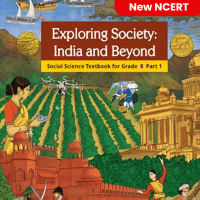Class 8 Exam > Class 8 Questions > D/B renewable and non-renewable resource?
Start Learning for Free
D/B renewable and non-renewable resource?
Verified Answer
D/B renewable and non-renewable resource?
 This question is part of UPSC exam. View all Class 8 courses
This question is part of UPSC exam. View all Class 8 courses
Most Upvoted Answer
D/B renewable and non-renewable resource?
Difference Between Renewable and Non-renewable Resources:Renewable ResourcesRenewable resources are those resources which can be renewed or replaced over time. Great examples of infinite, renewable resources are: wind, sunlight, tides, biomass, etc. Some of the renewable resources are supposed to have continuous supplies, such as wind energy and solar energy, while some others take a greater time in their renewal like wood, oxygen, etc. Geothermal energy is another good example of renewable resources. It is the source of energy which is extracted from the heat which is stored under the surface of the Earth. This source is considered to be cost efficient and mostly sustainable. It is found in the form of inactive volcanic sites and hot springs. This form of energy may be utilized in heating, generating electricity, and heat pumps. Geothermal energy is a sustainable source as the hot water seeps down into the crust again. A biomass is also considered a renewable resource if used properly.Non-renewable ResourcesNon-renewable resources are those natural resources which cannot be renewed once they are completely consumed. The resources which are replenished very slowly are also considered non-renewable resources. This is because these resources will not be available again or available only after a long time.The best examples of non-renewable resources are fossil fuels such as coal, oil, and natural gases. Fossil fuels are produced by the decay of animal and plant matter. Their rate of production is very slow as compared to the rate of their extraction and consumption.Another example of a non-renewable resource is our lifetime. Once used up, any individual cannot get back lost time. Other good examples of non-renewable resources are; nuclear fuels, minerals, and shale.Water is a controversial resource which can be categorized as both a renewable and non-renewable resource. The cyclic change of water makes it a renewable resource while its unmanaged usage is making it a non-renewable resource.
Community Answer
D/B renewable and non-renewable resource?
Renewable resources are those resources which we can reproduce or renew by natural process Ex-Solar energy , Non-renewable resources can not be reproduced Ex-petrol, mineral

|
Explore Courses for Class 8 exam
|

|
Question Description
D/B renewable and non-renewable resource? for Class 8 2025 is part of Class 8 preparation. The Question and answers have been prepared according to the Class 8 exam syllabus. Information about D/B renewable and non-renewable resource? covers all topics & solutions for Class 8 2025 Exam. Find important definitions, questions, meanings, examples, exercises and tests below for D/B renewable and non-renewable resource?.
D/B renewable and non-renewable resource? for Class 8 2025 is part of Class 8 preparation. The Question and answers have been prepared according to the Class 8 exam syllabus. Information about D/B renewable and non-renewable resource? covers all topics & solutions for Class 8 2025 Exam. Find important definitions, questions, meanings, examples, exercises and tests below for D/B renewable and non-renewable resource?.
Solutions for D/B renewable and non-renewable resource? in English & in Hindi are available as part of our courses for Class 8.
Download more important topics, notes, lectures and mock test series for Class 8 Exam by signing up for free.
Here you can find the meaning of D/B renewable and non-renewable resource? defined & explained in the simplest way possible. Besides giving the explanation of
D/B renewable and non-renewable resource?, a detailed solution for D/B renewable and non-renewable resource? has been provided alongside types of D/B renewable and non-renewable resource? theory, EduRev gives you an
ample number of questions to practice D/B renewable and non-renewable resource? tests, examples and also practice Class 8 tests.

|
Explore Courses for Class 8 exam
|

|
Signup for Free!
Signup to see your scores go up within 7 days! Learn & Practice with 1000+ FREE Notes, Videos & Tests.

























